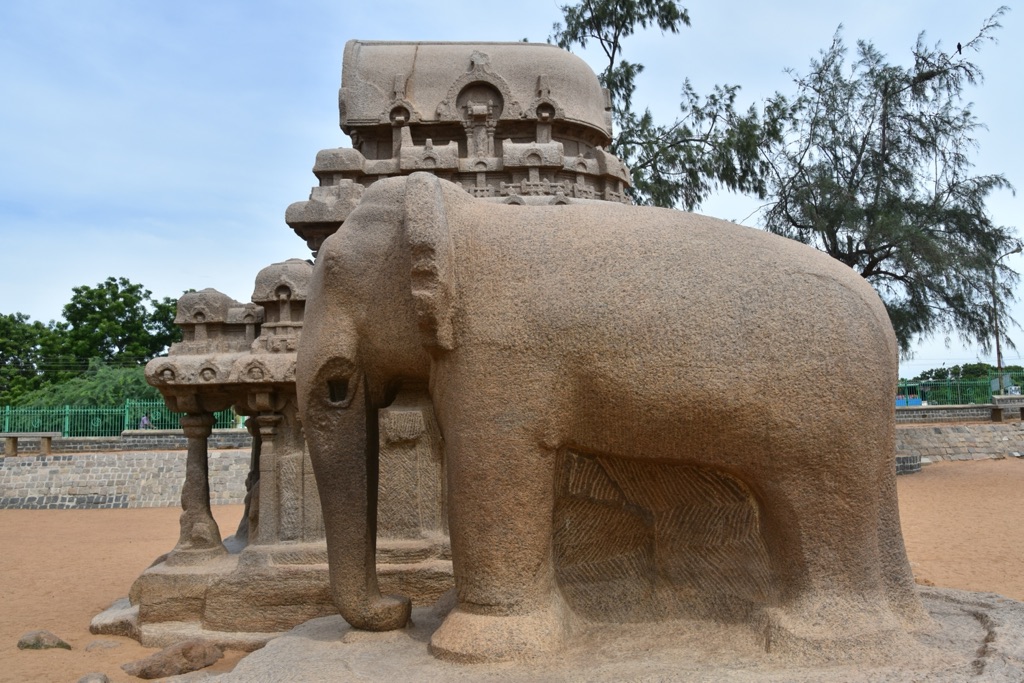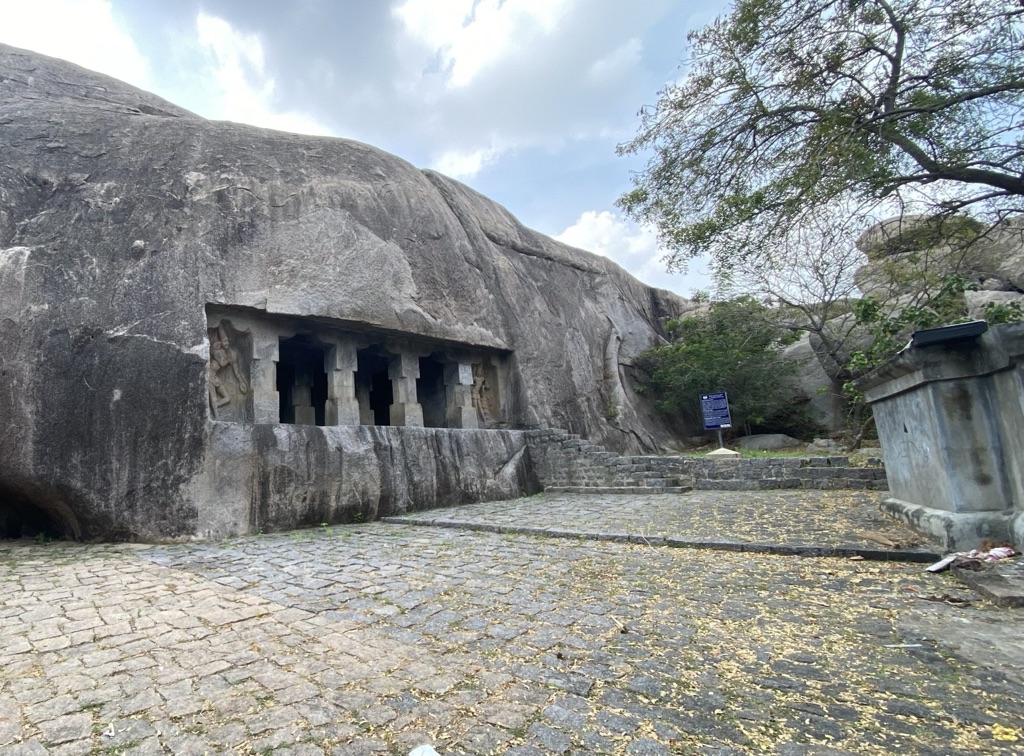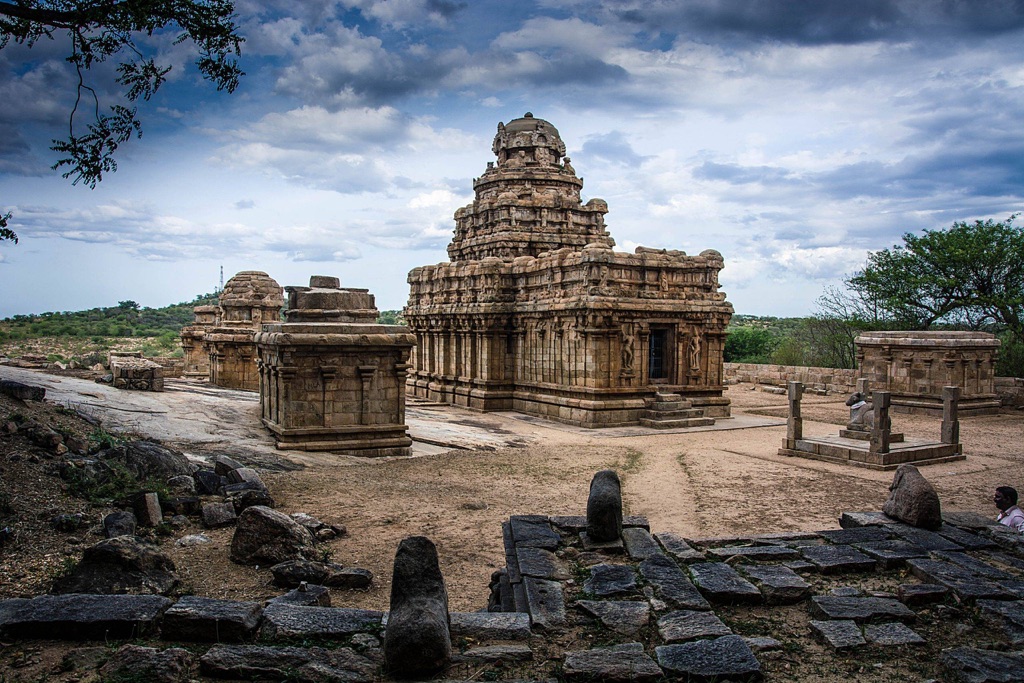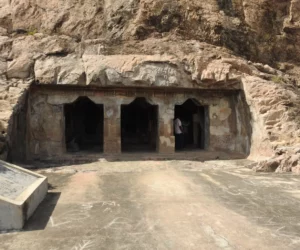The Rock-Cut Wonders of Mamandur: A Glimpse into 7th-Century Pallava Architecture Mamandur, a village in Tamil Nadu’s Tiruvannamalai district, sits just 10 kilometers from Kanchipuram. This village is renowned for its 7th-century rock-cut cave temples, which feature Tamil Brahmi inscriptions. These temples, declared monuments of national importance, showcase the Pallava dynasty’s remarkable contributions to art…
Pallava dynasty
The Pallava dynasty was an influential power in southern India from the 3rd to the 9th centuries CE. Their reign, predominantly across the regions of Tamil Nadu and parts of Andhra Pradesh, was marked by advancements in architecture and the fine arts. The capital of the Pallava dynasty was Kanchipuram, celebrated as a city of learning and religious centers. Renowned for their patronage of architecture, the Pallavas were responsible for the stunning rock-cut and structural temples found at Mahabalipuram, a UNESCO World Heritage site. These temples feature intricate sculptures that depict Hindu mythology and are considered masterpieces of Indian art.
The founder of the Pallava dynasty, traditionally said to be Simhavishnu, established the foundations for a line of pioneering rulers. They cultivated a rich cultural landscape, supporting Sanskrit literature and enabling the flourish of devotional movements which have had a lasting impact on South Indian spirituality and culture. The Pallavas also played a critical role in developing the Dravidian architectural style, which is evident in their pyramidal temple towers. The dynasty’s influence extended beyond India, with their maritime expertise leading to interactions with Southeast Asia. This created cultural bridges and exchanges that resonated in the region’s art and architecture. Despite facing challenges from rival dynasties and the eventual rise of the Chola Empire, the legacy of the Pallavas endures in the temples and monuments that continue to inspire wonder and scholarship today.

Pancha Rathas
The Pancha Rathas is an exemplary set of rock-cut temples located in the coastal town of Mahabalipuram, in the state of Tamil Nadu, India. These ancient structures, carved during the 7th century, are named after the Pandavas, the heroes of the Indian epic Mahabharata. The site is unique for its monolithic architecture, with each temple carved from a single piece of stone. The Pancha Rathas complex is part of the Group of Monuments at Mahabalipuram, which UNESCO designated as a World Heritage Site in 1984.

Mandagapattu Temple
The Mandagapattu Temple is a celebrated historical site that marks an important evolution in South Indian temple architecture. Carved out of a rock face, this Hindu temple is a fine example of early Pallava art and showcases a unique blend of religious and cultural influences. Unlike the later Dravidian temples with towering gopurams, the Mandagapattu temple’s charm lies in its simplistic yet intricate carvings and the absence of deities in its sanctum at its time of conception. This landmark is believed to be the brainchild of King Mahendravarman I, who initiated the practice of rock-cut architecture in the region.

Narthamalai
Located in the southern Indian state of Tamil Nadu, Narthamalai is a captivating historical site that boasts of a rich and diverse past. This cluster of nine hills is home to some of the oldest rock-cut temples in India, as well as a number of other intriguing archaeological treasures. The site’s unique blend of natural beauty and historical significance makes it a must-visit for any history enthusiast.

